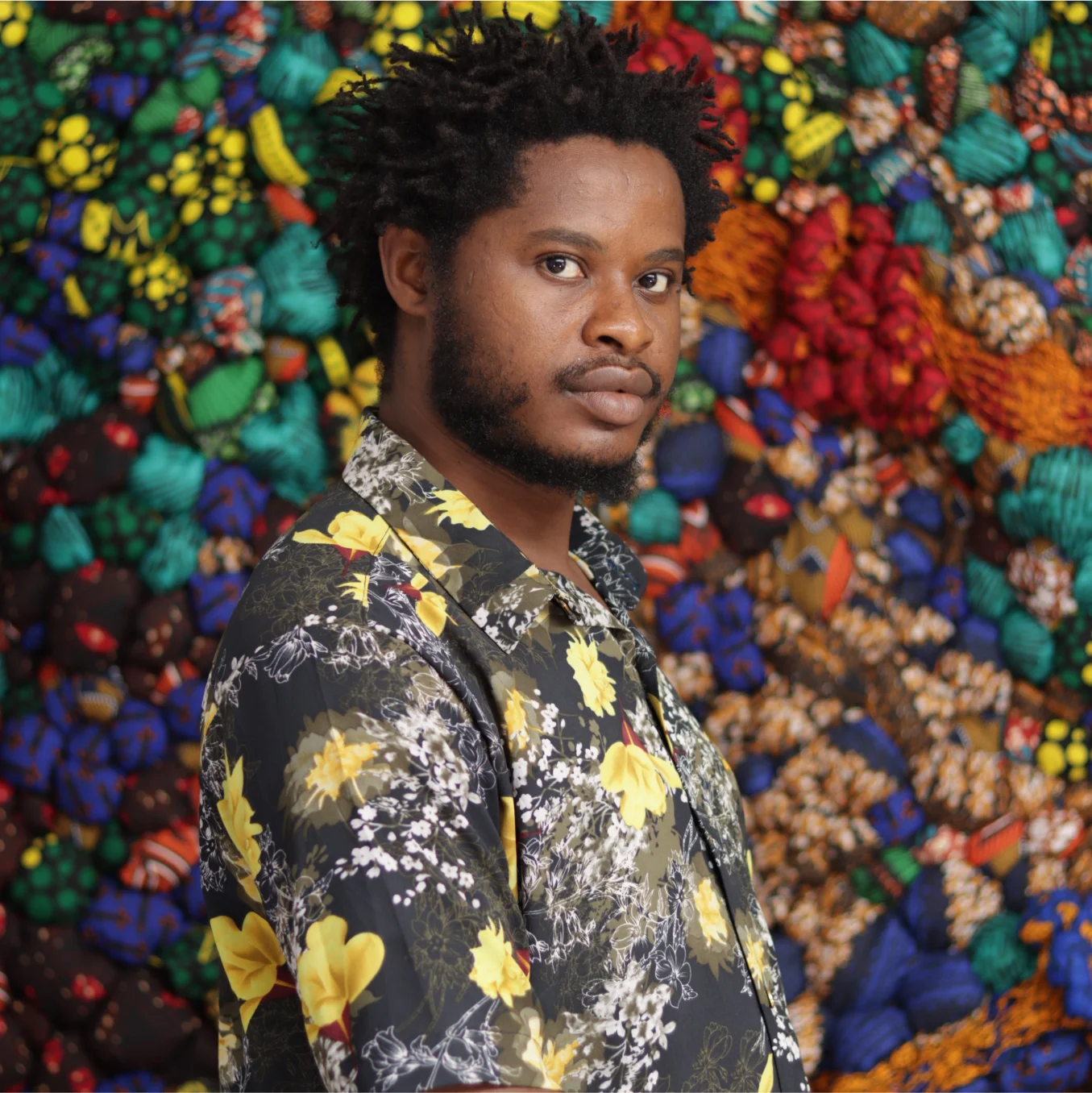About

Who is Samuel Nnorom?
Biograhpy
Born in Nigeria in 1990, Samuel Nnorom is a multi-award-winning artist whose work
poetically crosses tapestry-like sculpture and pre-loved Ankara wax fabric. Since early
childhood, elements that now shape his contemporary practice have surrounded him:
sketching portraits of customers who visited his father’s shoe shop and playing with
colourful scraps from his mother’s tailoring workshop crystallised his artistic vocation. Self-
proclaimed “custodian of material culture”, Nnorom draws upon materiality in a unique way,
dedicating his art to textile recycling and a sociological reflection on the human condition.
Through sewing, tying and cutting, the rising artist creates intricate constellations of fabric-
covered foam balls meticulously stitched together, evoking a metaphor for a “fabric of
society” composed of closed social structures forming the bubbles in which our daily lives
are wrapped in. Using Ankara textiles – whose origins are complex in the history of the
continent, Nnorom explores its protean symbolism and reappropriates a contemporary
fabric omnipresent in his community.
Currently living and working in Nsukka, Samuel Nnorom holds an MFA in sculpture from the
University of Nigeria. He cumulates numerous workshops and residencies in England, South
Africa, Burkina Faso, Senegal and Nigeria, numerous Solo shows, group shows and art fairs globally, as well as being commissioned several times for public works in his home country. He won the global prize winner of the “Art for Change Award 2022” organised by M&C Saatchi and Saatchi Grou
Artist Statement
My interest lies in the history, value, meaning, politics, consumption, power, and identity represented on the Dutch wax prints or African print fabric (Ankara) and the second-hand or used clothes (Okirika), which are predominantly consumed within my local community and West Africa. Fabrics evoke a sense of social structure or organisation that interlaces humanity into society; however, when referring to the “fabric of society” or “social fabric,” it is unique to different societies that inform my contemplation on socio-political structures, consumerism, industrialization, and colonial remnants. These themes are sometimes expressed through metaphors such as bubble forms, bindle forms, lines of fabric strips, exploded bubbles, and tied clothes on architectural structures or canvases using techniques such as cutting, rolling, stitching, tying, and installation. Such expressions respond to our daily lives and struggles while fostering commonality and social connection.
I hope for my works to inspire endless possibilities in the minds of audiences by promoting self-interrogation and critical thinking while appreciating artistry at its finest.